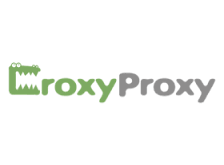In the heart of Pakistan’s textile industry, where the rhythmic hum of machinery weaves tales of craftsmanship and innovation, lies the art of yarn dyeing—a process that transforms plain yarn into a kaleidoscope of colors, ready to adorn fabrics with vibrant hues and intricate patterns. But how does this mesmerizing transformation unfold, and what techniques are employed to achieve the desired results? Join us as we unravel the mysteries of the yarn dyeing process, delving into its inner workings and exploring the diverse techniques used by leading yarn suppliers in Pakistan to create exquisite yarns that inspire creativity and elevate textile designs.
How Is Yarn Prepared for Dyeing and What Are the Fundamental Steps Involved?
Before diving into the intricacies of yarn dyeing techniques, it’s essential to understand the fundamental steps involved in the process, from preparing the yarn for dyeing to the final finishing touches.
1. Preparation:
Before the dyeing process begins, the yarn undergoes meticulous preparation to ensure optimal dye absorption. This involves cleaning, scouring, and treating the yarn to remove impurities, oils, and other substances that may hinder the dyeing process. The yarn is then carefully wound onto cones or skeins, ready to receive the vibrant hues of the dye. This initial step sets the stage for uniform color penetration and ensures consistent dye uptake across the yarn fibers, laying the foundation for vibrant and long-lasting colors.
2. Dyeing:
Once prepared, the yarn is immersed in a dye bath, where it absorbs the colorant to achieve the desired shade. The dye bath may contain various chemicals, mordants, and additives to enhance dye uptake, fixation, and color fastness. Depending on the dyeing technique and equipment used, the process may involve immersion dyeing, continuous dyeing, or other specialized methods tailored to specific yarn types and color requirements. Through precise control of temperature, pH, and dye concentration, manufacturers can achieve accurate color matching and reproducibility, meeting the stringent quality standards of the textile industry.
3. Fixation:
After dyeing, the yarn undergoes a fixation process to ensure that the color adheres permanently to the fibers. This may involve heat-setting, steaming, or chemical treatments to lock in the dye molecules and prevent bleeding or fading during subsequent processing and use. Proper fixation not only enhances color fastness but also improves yarn stability and resistance to abrasion, ensuring that the dyed yarn maintains its visual appeal and structural integrity over time.
4. Washing and Finishing:
Once fixed, the dyed yarn is thoroughly washed and rinsed to remove excess dye, chemicals, and impurities. It is then dried, wound onto cones or spools, and subjected to final finishing processes to enhance its appearance, texture, and performance. These finishing treatments may include softening, calendaring, or other techniques to achieve the desired aesthetic and functional properties. By carefully controlling the washing and finishing parameters, manufacturers can fine-tune the hand feel, luster, and overall quality of the dyed yarn, meeting the diverse preferences of customers and end-users.
5. Printing:
Yarn printing, similar to fabric printing, involves applying colored pigments or dyes directly onto the yarn’s surface to create patterns, motifs, or designs. This technique offers endless possibilities for customization and personalization, allowing for the creation of unique and eye-catching yarns for specialized applications. With advancements in digital printing technology, manufacturers can achieve intricate designs and vibrant colors with precision and efficiency, expanding the creative possibilities in yarn design and decoration.
What Are the Different Techniques Used in Yarn Dyeing and How Do They Differ?
Yarn dyeing encompasses a wide range of techniques, each yielding unique effects and patterns on the finished fabric. Let’s explore some of the most commonly used techniques and their characteristics.
Solid Dyeing:
Solid dyeing, also known as skein or hank dyeing, requires immersing the full length of yarn in one color bath to get a uniform color throughout. This technique is often used to create solid-colored yarns for a range of purposes, including garments and home textiles.
Space Dyeing:
Space dyeing, also called variegated or multi-color dyeing, involves applying different colors to various sections of the yarn to create a patterned or mottled effect. This technique allows for greater design flexibility and artistic expression, resulting in yarns with unique and visually appealing color combinations.
Dip Dyeing:
Dip dyeing, as the name suggests, involves partially immersing the yarn in different dye baths to create graduated or ombre effects. By controlling the depth and duration of immersion, dyers can achieve subtle transitions between colors, adding depth and dimension to the yarn’s appearance.
Resist Dyeing:
Resist dyeing techniques, such as tie-dyeing and batik, involve selectively preventing dye from reaching certain areas of the yarn to create patterns and motifs. You may achieve this through various methods, such as tying, folding, or applying resist agents, resulting in intricate and decorative designs that enhance the visual interest of the yarn.
Printing:
Yarn printing, similar to fabric printing, involves applying colored pigments or dyes directly onto the yarn’s surface to create patterns, motifs, or designs. This technique offers endless possibilities for customization and personalization
Why Does Yarn Dyeing Offer Unique Advantages for Textile Manufacturers?
Yarn dyeing offers numerous advantages over other methods of coloring fabrics, making it a preferred choice for textile manufacturers and designers seeking quality, versatility, and creativity. With its ability to create intricate patterns, vibrant colors, and excellent colorfastness, yarn dyeing elevates the aesthetic appeal and durability of fabrics. As a reputable yarn-dyed fabric supplier, we ensure our products meet the highest standards of quality and innovation, catering to the diverse needs of our clients in the fashion and home decor industries.
- Colorfastness: Explore the superior colorfastness of yarn-dyed fabrics, where dyes penetrate the yarn fibers deeply, resulting in colors that resist fading, bleeding, and washing over time.
- Design Flexibility: Discover the design flexibility offered by yarn dyeing, allowing manufacturers to create intricate patterns, plaids, checks, and jacquard designs with precision and detail.
- Customization: Learn about the customization options available with yarn dyeing, where manufacturers can tailor colors, patterns, and effects to meet the specific requirements and preferences of their customers.
- Durability: Explore the durability of yarn-dyed fabrics, where dyes bond tightly to the yarn fibers, ensuring long-lasting color vibrancy and resistance to wear, tear, and abrasion.
What Are the Applications of Yarn-Dyed Fabrics Across Industries?
Yarn-dyed fabrics find applications across a wide range of industries, from fashion and apparel to home textiles and upholstery. Explore the diverse uses of yarn-dyed fabrics and their significance in various sectors.
- Fashion and Apparel: Discover how apparel such as shirts, blouses, dresses, and trousers utilize yarn-dyed fabrics to achieve vibrant colors, intricate patterns, and superior quality.
- Home Textiles: Learn about the role of yarn-dyed fabrics in home textiles such as curtains, upholstery, bedding, and table linens, where aesthetics, durability, and performance are essential for creating inviting living spaces.
- Accessories: Explore the use of yarn-dyed fabrics in accessories such as scarves, ties, handkerchiefs, and bags, where color, texture, and style play a key role in enhancing the overall look and feel.
How Does Avon Commercial Elevate Yarn Dyeing with Its Range of Products?
As a leading supplier of yarns in Pakistan, Avon Commercial offers a comprehensive range of high-quality yarns, including yarn-dyed fabrics, to meet the diverse needs of customers across industries. Here are five yarn products available from Avon Commercial:
- Cotton Yarn: Premium quality cotton yarns known for their softness, breathability, and versatility, suitable for a wide range of apparel and home textile applications.
- Polyester Yarn: Durable and colorfast polyester yarns ideal for sportswear, outdoor gear, and technical textiles, offering excellent moisture management and performance properties.
- Viscose Yarn: Luxurious viscose yarns with a silky feel and drape, perfect for creating elegant and fluid fabrics for eveningwear, lingerie, and drapery.
- Blended Yarn: Versatile blended yarns combining natural and synthetic fibers to achieve unique properties such as strength, elasticity, and moisture absorption, tailored to specific application requirements.
- Yarn-Dyed Fabrics: Vibrant and durable yarn-dyed fabrics available in a variety of colors, patterns, and textures, suitable for fashion, home textiles, and upholstery applications.
How Can Businesses Benefit from Partnering with Avon Commercial?
Partnering with Avon Commercial offers numerous advantages for businesses seeking high-quality yarn products and reliable supply chain solutions:
- Product Quality: Avon Commercial ensures the highest standards of quality and consistency in its yarn products, providing peace of mind to customers.
- Technical Support: Avon Commercial offers technical expertise and support to help customers optimize their processes and achieve their production goals.
- Supply Chain Reliability: With a robust supply chain network and strategic partnerships, Avon Commercial ensures timely delivery of yarn products to customers nationwide.
- Customization: Avon Commercial works closely with customers to develop customized yarn blends, colors, and finishes tailored to their specific needs and applications.
- Environmental Responsibility: Avon Commercial commits to environmental stewardship and sustainability by implementing best practices to minimize its environmental footprint and promote a more sustainable future.
Conclusion: Unleashing Creativity with Yarn Dyeing Techniques
In conclusion, the art of yarn dyeing opens up a world of possibilities for textile manufacturers and designers, offering endless opportunities for creativity, innovation, and expression. Whether it’s creating vibrant plaids and stripes for fashion apparel, intricate jacquard patterns for upholstery, or subtle ombré effects for home textiles, yarn dyeing techniques allow artisans to bring their designs to life with stunning colors and textures. With Avon Commercial as a trusted partner, businesses can access a wide range of high-quality yarn products and expertise to fuel their creative vision and achieve success in the dynamic world of textiles. So, partner with Avon Commercial today and unleash your creativity with the art of yarn dyeing.
Don’t forget to check out the other interesting articles on this website.
Also Read: Travel Tech Essentials: Exploring Benefits
 Daily Blogger News Stay updated with the latest trends and insights. Your reliable source for daily updates and information.
Daily Blogger News Stay updated with the latest trends and insights. Your reliable source for daily updates and information.






